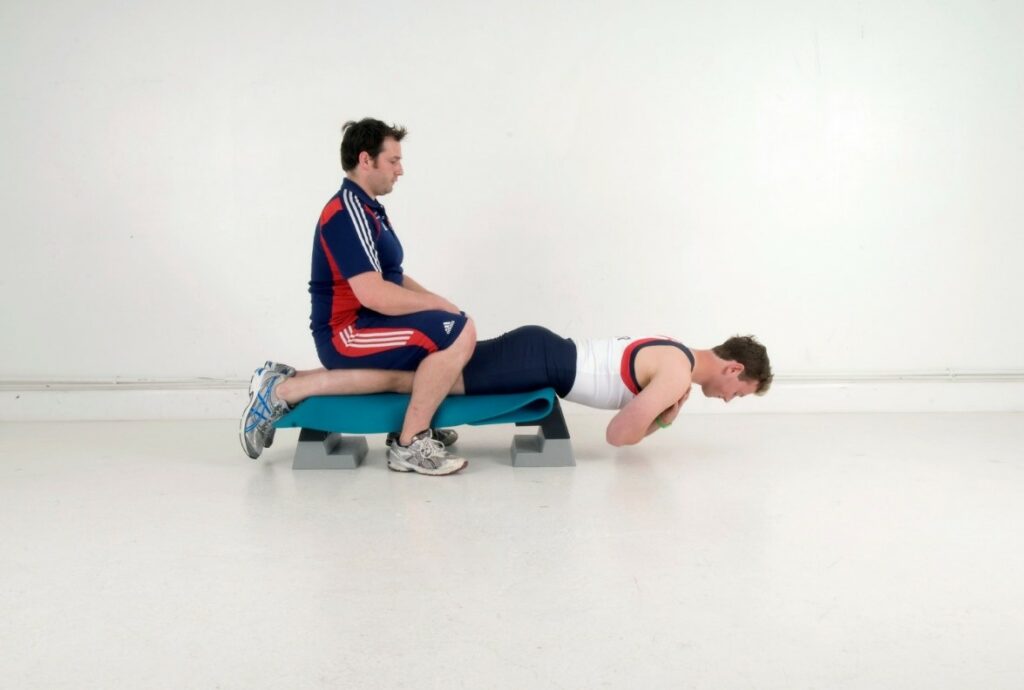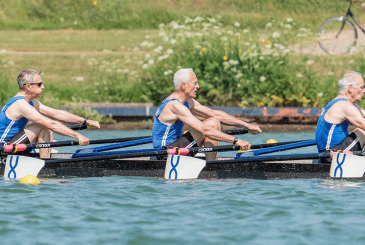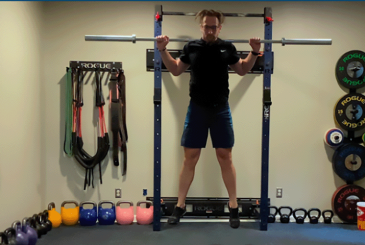In this article Sam Boylett-Long explains why a strong trunk is vital for indoor rowing, and suggests some exercises to add to your training routine
Having a strong trunk is vital for maximising the force transferred from your leg drive onto the ergo handle. Why do we need a strong trunk? Being strong underpins the robustness and integrity of the spine, elements of posture and subsequent injury risk mitigation. Not only can performance be improved with a strong trunk via increases in the efficiency of force transfer but also in how the force/stress is dissipated though the body, mitigating point loading to a specific tissue and subsequent injury risk.
The four quadrants of musculature that make up the trunk links together the spine, rib cage and pelvic girdle, working in synergy to control the interaction between the hip, limbs and torso. During the rowing stroke, the musculature of the trunk transfers the force generated by your leg drive, through the shoulder girdle and onto the handle. Throughout the stroke, posture and control of the hip is governed by the musculature of the trunk. Just as the musculature around the pelvis centres the ball of the femur into the socket of the hip, the musculature around the spine helps keep it in an optimised position to create stability during the stroke.
A few examples are, if you feel a disconnect between your leg drive and force through the handle (average power or length per stroke), find it difficult to sit tall or have a sense of instability through your trunk then you may benefit from adding some trunk-specific work into your programme.
Is my trunk strong enough?
Whilst I have provided a few subjective examples of how to know if you need more trunk strength, how can we be certain? Within the Senior programme, we collect data from each athlete on the maximum time they can hold themselves in a prone, supine and lateral position. We then use this information to assess their areas of weakness in relation to our normative data. The only equipment you require to do the same is a stopwatch, something to be held off and someone to hold your legs during the test.
NB. All athletes will complete some trunk work at least three times a week to maintain their levels, but the volume of work (two sets per trunk quadrant) will be lower than those looking to increase strength (three to four sets per trunk quadrant).
Anterior trunk
Double leg hold – tests the endurance capacity of the anterior trunk and its ability to hold a strong lumbar pelvic position against load.
Set up: Lying on your back with legs out straight, you will need to hold onto an anchor point, a heavy object or someone’s ankles to support. During the hold, you must keep your lower back in contact with the floor, with your legs straight (slight knee bend).
Test: The stopwatch begins when your heels are two inches off the floor. The test should be stopped if the legs are held too high, if a significant knee bend is observed or the lower back lifts off the floor.
Marker: If you are unable to maintain the double leg hold for at least 90 seconds, I would strongly recommend finding time for some exercises to improve your anterior trunk. If you can hold close to, or above, 150 seconds I would say your anterior trunk is in a good place.

Posterior trunk
Prone hold – this specifically tests the capacity of the extensors of the spine and is significantly related to low back pain for those with lower scores.
Set up: Lying face down with feet together, position the bony part of your hips on the edge of the object you are being supported off. The tester* should sit across the lower legs, below the knee, to support the athlete.
Test: The stopwatch begins when you are suspended off the bench with arms crossed fingertips on shoulders. The test should end if you drop or rise excessively.
Marker: If you are unable to sustain a prone hold for at least 90 seconds, I would strongly recommend finding time for some exercises to improve your posterior trunk/posterior chain. If you can hold close to, or above, 150 seconds I would say your posterior chain and trunk is in a good place.

*please consider Covid restrictions if choosing to carry out this test and make your tester fully aware of the set up in advance
Lateral trunk
Left and right lateral holds – tests the lateral trunk’s ability to resist lateral flexion of the spine and alignment of the hips.
Set up: Lying sideways on a bench with the bony part of your hip in line with the edge of the box, place your top leg slightly behind bottom. The tester* should sit across the lower legs, below the knee, to support the athlete.
Test: The stopwatch begins when you are suspended off the bench with arms crossed fingertips on shoulders. The test should be terminated if shoulders drop below hip height, shoulders are higher than hip height, or if there is excessive torso rotation (top shoulder rotating over).
Marker: If you are unable to sustain a lateral hold for at least 90 seconds, I would strongly recommend finding time for some exercises to improve your lateral trunk. If you can hold close to, or above, 150 seconds I would say your lateral trunk is in a good place. The other area to consider here is the ratio of difference between left and right. Whilst some asymmetry is normal, if one side differs by more than 15 seconds I would recommend biasing that side within your training programme.


*please consider Covid restrictions if choosing to carry out this test and make your tester fully aware of the set up in advance
Conclusion
So now you have a handle on the strength of each quadrant around the trunk, you might be thinking How does this all fit into my programme? On the senior programme, athletes will complete trunk work four times per week as a minimum. Four or more sessions spaced out across the week will bring meaningful changes to the musculature around the trunk with re-testing occurring after a four to six week block of training to assess the effectiveness. Each session will last five to ten minutes with an emphasis placed on biasing the quadrants which are falling behind!
As with your hip conditioning programme, the aim here is for symmetry with the lateral trunk whilst trying to push the endurance capacity of your anterior and posterior trunk. This will maximise your body’s ability to transfer force from your leg drive, into the handle and mitigate injury risk with a more robust chassis.
Exercises to improve
The best way to improve each of the quadrants is a combination of static holds and dynamic work. For each of the exercises below, if your scores were low relative to the markers, I would start with 15 seconds and build up to 30 seconds per exercise. Each set of exercises should not be longer than two to three minutes to maintain a high quality, with the overall time not going above eight minutes.











